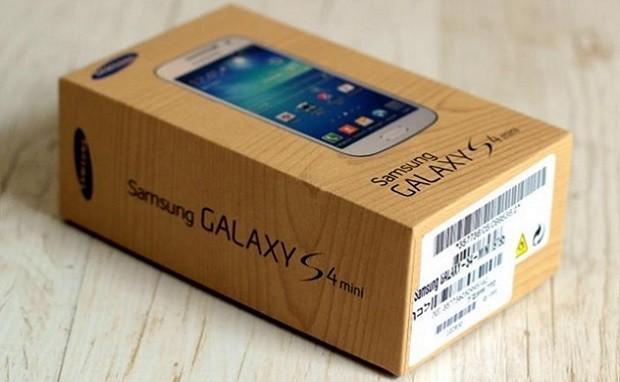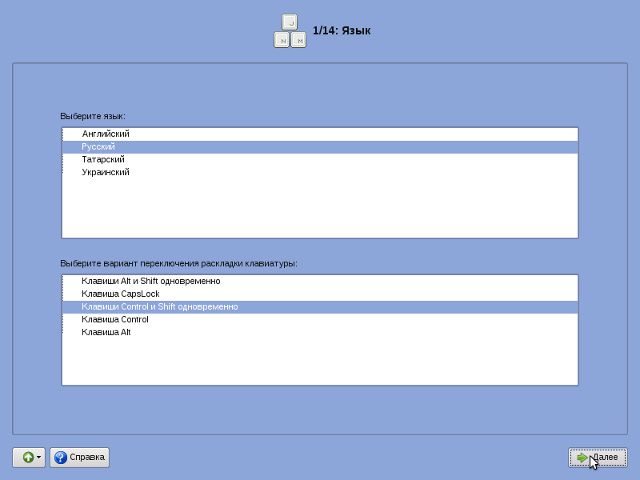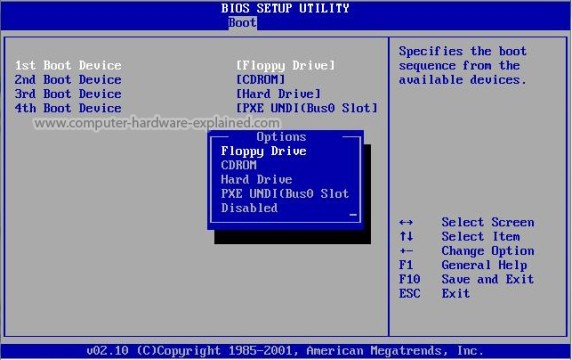Running programs in wine. Installing and Configuring Wine - a program to run Windows applications. Winetricks - advanced settings, components and programs
Wine (/ waɪn / - between wine and wine) is free software that allows users of UNIX-like x86 architecture systems (and other architectures, if compatible, for example, AMD64) to run 16- and 32-bit Microsoft applications Windows (64-bit applications are in the early stages of implementation). Wine also provides programmers with a Winelib program library with which they can compile Windows applications to port them to UNIX-like systems. The name Wine is a recursive acronym and stands for “Wine Is Not an Emulator” - “Wine is not an emulator” (meaning that Wine is not a computer emulator, such as qemu or VirtualBox, Wine is an alternative implementation of the Windows API).
4. Installing WINE on Ubuntu
Sudo apt-get install wine
After executing this command, all necessary packages will be downloaded, installed and configured, however, it should be borne in mind that, as a rule, the old version of WINE is located in the official Ubuntu repositories. To access the latest releases, you need to connect a third-party WINE repository. How to do this is described at http://www.winehq.org/download/deb. Then you should run the command “sudo apt-get update” and install WINE using the command above. You can configure WINE by running the winecfg command (or from the “Wine” menu in the “Applications” run “Configure Wine”).
There are two ways to launch Microsoft Windows applications: from the console, which is a more flexible way, since you can specify additional parameters for launching in the line; via a graphical user interface. In the first case, on the command line, you need to do something like this:
Wine -keys /home/user/program.exe
- wine - a WINE run command,
- -keys - keys that you want to pass to the program,
- / home / user / - the directory in which the program is located,
- program.exe - Windows executable file.
After installing WINE in the system, executable Windows-files can be launched by right-clicking and selecting the menu item "open with" WINE ". If you installed the Windows-program in WINE, it will appear in the newly created special menu “Wine” in “Applications”, as shown in the picture.
The official WINE website has a special database that displays the performance of a particular popular Windows application, thanks to which you can know in advance whether your favorite or necessary program will work. The web-based interface to the database is located at http://appdb.winehq.org/
5. Graphic Shell for Wine -q4wine
First of all, it is necessary to facilitate various processes and to more easily launch windows applications.
Q4wine integrates a very convenient browser for windows applications that have already been launched in Wine before. Thus, you can easily launch the application you need.
Also, using q4wine, you can access system processes, the system registry of emulated Windows, startup, etc.
Description q4wine
- q4wine is a graphical shell for Wine that facilitates and speeds up the installation of windows applications.
- q4wine has a built-in browser based on applications running in Wine - Wine AppDB.
- Through q4wine, you can conveniently manage the running system processes of windows applications.
- It is possible to mount disk images. Supported formats: iso, nrg, mdf.
- You can run the windows application in a different version of Wine of your choice.
- You can set the priority of running system processes.
- The choice of icons from * .dll and * .exe is supported.
- With q4wine, you can easily create and edit the Wine prefix (WINEPREFIX). You can also create a backup copy of the created prefix and roll it back.
- You can easily start the registry of emulated Windows, the system console (cmd), the Add / Remove Applications window.
- All actions in q4wine are logged. In case of unsuccessful circumstances or erroneous actions, you can see your latest actions.
- The q4wine graphical shell is written in Qt, so it looks good and harmonious in any graphical environment.
Installation
To install q4wine in Ubuntu you need to add an additional repository:
There are 2 versions of the project in the repository: stable and unstable, which can be installed accordingly:
You can install the version of your choice: stable and unstable:
| sudo apt-get install q4wine |
| sudo apt-get install q4wine-unstable |
The methods of installing q4wine in other operating systems can be found on the official page of the project.
After installation, q4wine can be launched through the shortcut Applications → System Utilities → q4wine
6. How it works
At the first start, Wine creates a .wine folder in your home directory. It contains the registry files in which the program settings are stored, and the drive_c subdirectory. It acts as the C: drive for Windows applications launched with Wine. The files of our installed programs are also located here. After installing the application, find its executable file in the .wine / drive_c folder. Then you can run the program. For these purposes, you can also adapt the shortcut on the desktop. If Windows is installed on the computer, you can go to its directory (it is usually located in the / media or / mnt directory)
For example, to install Adobe Photoshop 7, you need to copy the installation files from the distribution disk to the Photoshop folder in the home directory, launch the terminal and run the following commands
Cd photoshop
wine Setup.exe
An installer window will appear that guides us through all the installation steps. It will copy Photoshop files to the Windows virtual folder .wine / drive_c and add information about it to the registry files (they are also located in the .wine folder). As soon as the installer completes, we can start Photoshop with the command
Wine .wine / drive_c / Program \\ Files / Adobe / Photoshop \\ 7.0 / photoshop.exe
That's all! Photoshop works on Linux.
Leave your comment!
Wine, for those who don’t know, this is a shell by which You can run programs from the Windows operating system on Linux. At the moment, Wine supports a huge number of programs, of course, not all, and even more not new games like GTA 5, but nevertheless, with the right settings, you can run almost any program, released a few years ago.
But working with Wine is not very convenient. To install a particular program, you have to climb a bunch of forums and blogs to understand which packages you need to install and which libraries to add. This is followed by a long process of solving problems, installing packages through winetricks and manually setting up the registry and so on. This is all very difficult even for experienced users, not to mention newcomers.
But there is a solution, even a few. There are several shells for Wine that try to automate the process of installing programs - you select a program from the list of supported ones, the installer and the utility itself loads all the necessary libraries and packages. There are such shells for wine as PlayOnLinux, Crossover, and the lesser-known Qt4Wine, etc. But we won’t touch them today, they have already been written about enough on the Internet. We’ll look at something new - WineWizard.
The official website of the program is wwizard.net. WineWizard is the new open source shell for Wine. With a new idea of \u200b\u200bapproach to business, and much better than all previous ones. The main feature of WineWizard is software installation solutions. In order to install the Windows program, you just need to run the winewizard, select the installer for the program, and then select the program from the list of supported ones.
This is where the differences begin from the usual PlayOnLinux and Crossover. Supported programs are solutions, and every user can create them. All solutions are synchronized to the program server and are available to everyone. Creating a solution is very simple, you do not need to enter anything in the console or write scripts, just select the packages that are needed for the program to work from the list. Then the program itself will download and install the necessary packages.
But the most interesting thing here is that those solutions that you created will be available to all users, and their solutions will become available to you. Thus, it will no longer be necessary to search the forums for a very long time how to run a particular program, it is enough for someone to do everything alone and everyone will be able to use this solution without going into details. A new prefix is \u200b\u200bcreated for each program and you can select the wine version. It is also very nice that you can choose the architecture.
Among the advantages of the program are the support of mirrors for downloading packages, now many packages are taken from playonlinux, support for choosing a prefix architecture, tips after installing the program, which in case of an unsuccessful outcome can help solve the problem. Installing programs through Wine is very quick and easy if you already have solutions.
The program is completely new, so packages for it have not yet been compiled and it is not in the official repositories. To be more precise, at the moment there is a PPA for Ubuntu and a package in AUR for ArchLinux, but the versions in these repositories are already outdated.
I think that this will be fixed very soon, so I’ll still tell you how to install the program from PPA, but it’s better to use another way and install from the sources.
To add PPA to the system, use the command:
sudo add-apt-repository ppa: nightuser / winewizard
Now you can install:
sudo apt install winewizard
The program is ready to go. Well, now we will consider assembly from source codes. To build the program you need libraries and qt5 build tools installed in the system. We also need standard utilities for archiving - unzip, cabextract, bzip2, tar, this is for the program to work.
Install the Qt5 development tools in the system:
sudo apt install qt5-default
Install the necessary utilities:
sudo apt install unzip cabextract bzip2 tar
First, download the source itself:
git clone https://github.com/LLIAKAJL/WineWizard
Create the necessary directories:
cd WineWizard version_number
$ mkdir build && cd build
We start assembly:
qmake-qt5 ..
$ make
The last step is installation. You can use the command:
sudo make install
Or use the checkinstall utility in Ubuntu:
checkinstall
$ dpkg -i WineWizard *
That's all, the program is installed and ready to use, now we will consider installing programs through wine using the winewizard.
Installing Programs in Wine Using WineWizard
In this article, we will look at working with WineWizard using the example of installing the popular program for checking the uniqueness of texts - Advego Plagiatus.
First, run the program from the main menu of the system, or by executing the command in the terminal:
You will see here such a minimalistic main window in the form of a menu:
The whole point is that the program can hang in the tray and from there it will be very convenient to launch installed applications, it will be similar to the system menu.
To install the program, click the Install Application button.
In the next wizard window, you need to select the installer downloaded in advance from the official website:


Further, the most interesting, what we talked about, solutions. You must choose a solution for our program. To do this, enter the name of the program in the search bar. In our case, the installation of Advego Plagiatus linux will be performed:


We see a ready-made solution in the list, I already created it, but most likely there will be no solution for the program that you want to install. To create a new solution, click the Add button:

The solution will be created, but now it remains to edit it to indicate which packages need to be installed with the program, you can edit both the 64-bit version and the 32-bit version separately. Click the Edit button for the desired version. The next window is divided into three parts, the left column shows the packages that will be launched without the installer, the average available packages, and the right one, the packages will be installed before the program starts. Just drag the packages you need into the appropriate column, the left one will be more reliable. In the same window you can select the version of Wine:

After applying the changes, it remains to click OK, then OK again. Then select the prefix architecture:


Then the installation of Advego Plagiatus Linux starts, I will not describe the installer, everything is elementary there:





At the end, we can run the program, the installation of programs in wine is complete:

And we see that everything works fine:

Upon completion, WineWizard will ask if the program is working correctly:

All people love to play games. This lesson helps to distract from the real world with its real problems and, if not for long, but immerse yourself in the virtual world.
That is how the article about Windows games was supposed to begin. But today the conversation is not entirely about them. Today we will talk about games on Linux. Most people do not like this operating system just because there are no “normal” games on it, and it doesn’t matter that it performs very well at work.
But those who want can play the same games on Linux as on Windows. Ask how? But very simple. Today we’ll talk about how to install and configure Wine.
Those people who have been using Linux for a long time and have chosen it as the head of the OS probably do not need to define this software, but for the rest it’s worth explaining.
Wine is a program with which you can run Windows programs and games. In other words, with it you can play games that are not designed for Linux and are, so to speak, Windows exclusive.
It is noteworthy that the program is constantly evolving. So, a couple of years ago it was impossible to launch a game based on DiretX11 with it, now everything has changed. Patches are constantly coming out, and everything is quickly repaired if something is broken. If you prefer stability, you can easily install the standard version of Wine and it will not be able to surprise you unpleasantly.
The only downside is the relatively complicated Wine setup. But after reading this article, you will understand everything in minutes and do it yourself.
Installation methods
Before you talk about how Wine is configured for games, you must first explain how to install it.
Linux users know that the same action on their operating system can be done in different ways, and with
Consider initially the simplest option, using the Package Manager or, as it is also called, the Program Manager. In principle, no matter what it is called, the main thing is that it works the same way.

Initially, you need to open it. Next, in the search line, you need to write the name of the program - Wine. The search begins. At the end of it, several options may appear in front of you. Just select Wine without any extra characters and click Install. Wait for the program to download and install.
The second way is to use a terminal. Having opened it, write:
sudo apt-get install wine
Download will begin, followed by installation. However, there is a high probability that the “fresh” version is not downloaded, this is due to the fact that the program is developing by leaps and bounds. Therefore, we enter:
sudo add-apt-repository ppa: ubuntu-wine / ppa
sudo apt-get update
Now write:
sudo apt-get install wine1.6
That's all, just installed the software through the Console. Now we’ll tell you how Wine is configured.
What you need to know about setting up Wine?
For Wine (Linux), the setting may not always go smoothly, but don’t worry if you don’t succeed, you can return everything to its original position at any time. The easiest way is to uninstall the program and reinstall it, but this is only in extreme cases.
Another important thing is not to rush. In this matter, it is important to carefully read what needs to be done and when. But if you succeed, it will be remembered for a lifetime. Now let's get started.
First thing
There are two development options, the differences are small, but still there. If you have a 64-bit Linux distribution, then you and Wine have 64-bit installed, but this is not necessary. Therefore, enter this command in the terminal:
WINEARCH \u003d win32 winecfg
After that, you should open the Wine settings. Move it to the background and for now do not return to it. If you have a 32-bit system, you can skip this step.

Now you need to download and install Winetricks. To do this, write in the terminal:
winetricks
If you do not have this program, then you will be prompted to download it. Download and install. After run.
Winetricks allows you to quickly configure Wine itself. Running it in the first window, you must select Select the default wineprefix. Click OK.
Configure DLL and Fonts
We continue to talk about how Wine is configured. Clicking “OK”, we see that the second window will open. It is necessary to highlight Install a font - this is in order to customize the fonts. Click OK.

You will see a window with all the possible fonts for Wine. In order not to drag out for a long time and not waste time, we will choose everything at once and click OK. After that, the download and installation window will start. During this, do not go far from the computer, as it is likely that requests for confirmation of operations will appear. Agree with all of them.
It is likely that after selecting all the fonts and clicking the button, an error will be shown to you and everything will disappear. In this case, you won’t be able to install everything right away and you will have to do it separately. If, after selecting an item, an error occurs, skip it.
Now let's move on to setting up the DLL. This is a very important point, and you can not skip it, because without the installed DLLs it is unlikely that you will start at least some kind of game.
Click on Install a Windows DLL or component. You will see a similar window that was with the fonts. Not all components can be installed here, but some are required. In general, it would be better to do the same manipulations as with fonts. Alternately, try to install each of them, ignoring those that throw an error.
By the way, after trying to install some DLLs, such as dotnet30, they can throw out an error and open Explorer with a browser. In this case, on the browser page you need to download the proposed component and place it in the folder that was opened, and then do the installation process again.
Registry setting
By the way, the Wine setup in Linux Mint goes well with these instructions, although there should also be no problems with other distributions.

We turn to debugging the registry. To do this, in the second window this time select Change setting. Here one cannot afford liberties already, and it will not work to establish everything at once. Therefore, we follow the presented list of necessary settings:
ddr - opengl
multisampling - enabled
orm - f bo
psm - enabled
rtlm - auto
glsl - enabled - this is by standard, but if you have an Nvidia graphics card, then it’s better to choose disabled. This will increase gaming performance.
vsm - hardware
videomemorysize 1024 (select the amount of video card memory)
mwo - enabled (force)
That's basically all about Wine. Configuring Mint and other OS versions is no longer a problem for you, because this instruction is perfect for most distributions.
Remember one more thing, during the installation of Windows games you can’t choose to install additional software. Uncheck. Also, at the end of the installation, uncheck the "Run now" checkbox. Run through the shortcut on the desktop.
In this article I want to talk about how to install Windows games (or programs) using the program Playonlinux . PlayOnLinux makes it easy to install and run Windows games without the hassle of settings. Below I will look at the steps (with screenshots) of the installation and launch process in Linux (in Ubuntu) of a game designed for Windows.
Launch PlayOnLinux and in the main program window click Installation.
A window will open in which you must select the game or program that you will install. I selected the item Games and in it the game 18 Wheels of Steel Haulin. Next, press the button Installation.
A window opens with some information about the game. In it, just press the button Further.
Then PlayOnLinux will automatically install additional components that are required specifically for this game. In particular, he installed Wine 1.2.3 from me. 
Next, you will need to select the source from which you will install the game. You can select a CD-ROM if you install the game from a CD-ROM, or select the first item “ Use a setup file in my computer"If you want to specify the exe file directly on the computer. By setup file (exe file) here is meant the installation file of the game, for example, setup.exe or install.exe. I chose the first item. 
A window will open in which you need to click the button View to select the installation file. 
Next you need to find the installation file of the game. Since my iso image with the game is mounted in the / media / myiso folder, I went to this directory and selected the file there setup.exe.
A window will open again in which you can click the button View to select a file again or press Further, to continue. So click Further.
Now the fun part. The standard installation of the game should start. That is, as it would be in Windows. Here I just clicked the button everywhere Further. Only in the last window stripped off checkmark " Run ...». 


Here uncheck "Run ..." and click To complete.
After the standard installation of the game passed, PlayOnLinux asked me to indicate the amount of memory (in megabytes) of my video card. Select the correct value and click Next. 
This completes the installation of the game. A new item with the name of the game should appear in the main window of PlayOnLinux. Select it and press the button. Launch.
And now, finally, the game should start! By the way, it is at this stage that one may encounter problems. But in my case, everything went smoothly. Here is a screenshot of a game running in windowed mode: 
All actions were performed in Ubuntu 12.10.
In the penultimate screenshot in the list of games I have an item aoe3. This is the result of my attempts to install and run Age Of Empires 3. I still achieved the result, but it could not do without problems. I had to spend a lot of time.




